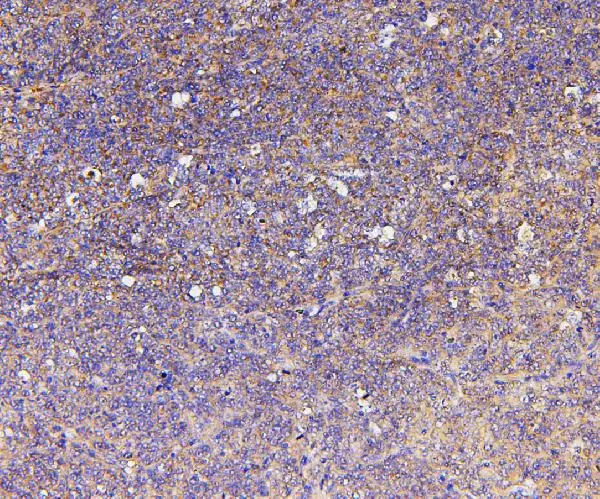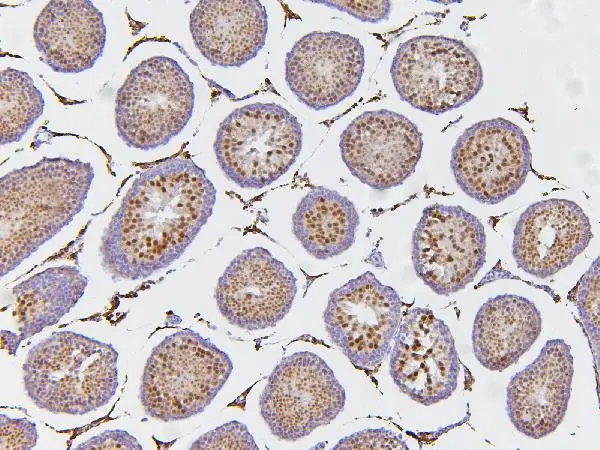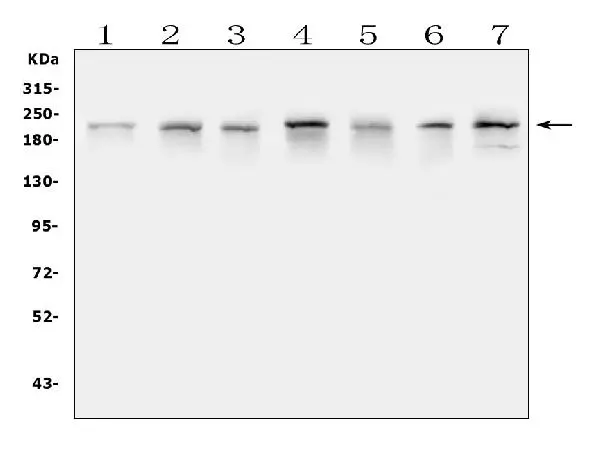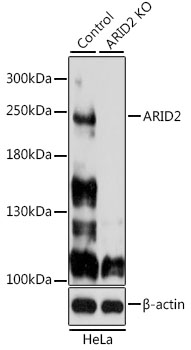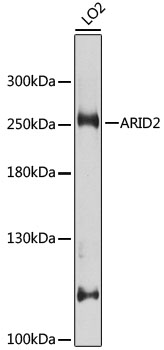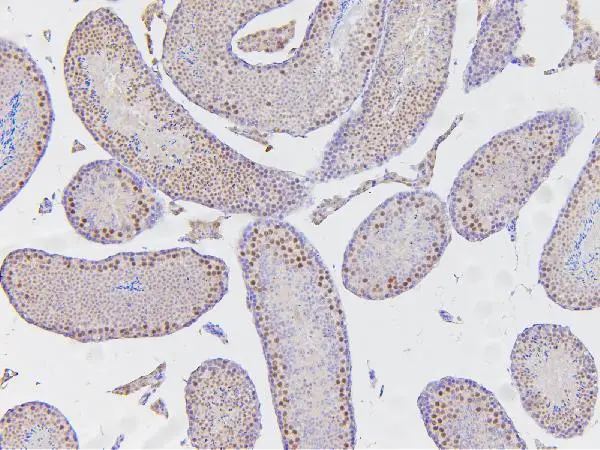
IHC-P analysis of mouse testis tissue using GTX01135 ARID2 antibody. Antigen retrieval : Heat mediated antigen retrieval was performed in citrate buffer (pH6, epitope retrieval solution) for 20 mins Dilution : 1microg/ml
ARID2 antibody
GTX01135
ApplicationsWestern Blot, ImmunoHistoChemistry, ImmunoHistoChemistry Paraffin
Product group Antibodies
ReactivityHuman, Mouse, Rat
TargetARID2
Overview
- SupplierGeneTex
- Product NameARID2 antibody
- Delivery Days Customer9
- Application Supplier NoteWB: 0.1-0.5microg/ml. IHC-P: 0.5-1microg/ml. *Optimal dilutions/concentrations should be determined by the researcher.Not tested in other applications.
- ApplicationsWestern Blot, ImmunoHistoChemistry, ImmunoHistoChemistry Paraffin
- CertificationResearch Use Only
- ClonalityPolyclonal
- Concentration0.5 mg/ml
- ConjugateUnconjugated
- Gene ID196528
- Target nameARID2
- Target descriptionAT-rich interaction domain 2
- Target synonymsBAF200, CSS6, SMARCF3, ZIPZAP, p200, AT-rich interactive domain-containing protein 2, ARID domain-containing protein 2, AT rich interactive domain 2 (ARID, RFX-like), BRG1-associated factor 200, zinc finger protein with activation potential, zipzap/p200
- HostRabbit
- IsotypeIgG
- Protein IDQ68CP9
- Protein NameAT-rich interactive domain-containing protein 2
- Scientific DescriptionThis gene encodes a member of the AT-rich interactive domain (ARID)-containing family of DNA-binding proteins. Members of the ARID family have roles in embryonic patterning, cell lineage gene regulation, cell cycle control, transcriptional regulation and chromatin structure modification. This protein functions as a subunit of the polybromo- and BRG1-associated factor or PBAF (SWI/SNF-B) chromatin remodeling complex which facilitates ligand-dependent transcriptional activation by nuclear receptors. Mutations in this gene are associated with hepatocellular carcinomas. A pseudogene of this gene is found on chromosome1. [provided by RefSeq, Dec 2016]
- ReactivityHuman, Mouse, Rat
- Storage Instruction-20°C or -80°C,2°C to 8°C
- UNSPSC12352203

